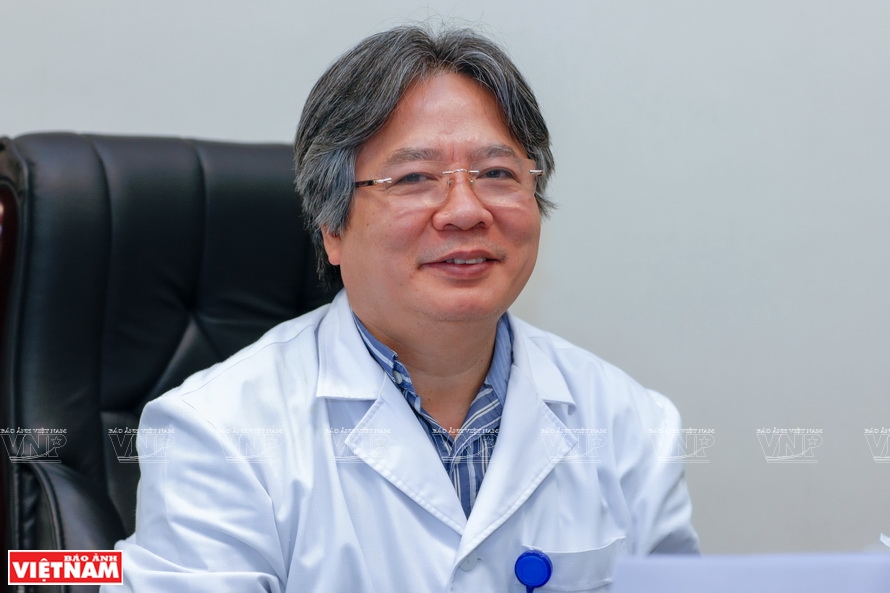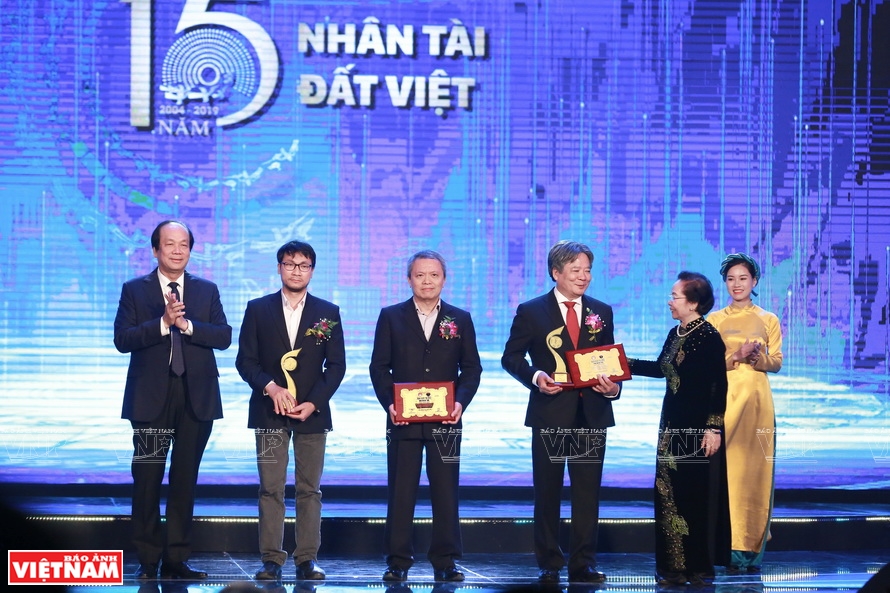It was 1987 when the world’s first laparoscopic surgery was conducted by Dr. Philippe Mouret. In 1990, laparoscopic surgery techniques started to be performed in some hospitals in France. The same year, Dr. Tran Binh Giang was assigned to Cochin University Hospital, one of the biggest hospitals in France to learn about transplantation. At that time, Dr. Delaitre at that hospital was still doing the very first laparoscopic surgeries. According to Dr. Tran Binh Giang, the world then was passionate about laparoscopy but the western medical world also recognized that this was an “elite surgery” of high costs so there was no intention of laparoscopy development in developing countries.
In 1992, Dr. Tran Binh Giang returned to Vietnam from France with a question weighing on his mind: “How can laparoscopy be done in Vietnam and how could we afford such expensive equipment.” According to Dr. Tran Binh Giang, there were two people who were not involved in laparoscopy but contributed a lot in helping him develop this technique in Vietnam. One of them is the late Dr. Nguyen Duong Quang, former Director of Viet Duc Hospital. Dr. Nguyen Duong Quang decided to use 500 million dong, money earmarked to buy a car for the hospital, for a set of laparoscopic surgery equipment after hearing Dr. Tran Binh Giang’s proposal. This money, along with contributions from other colleagues helped finance the first laparoscopic equipment for Viet Duc Hospital at the price of 650m dong (in 1992).
 Dr. Tran Binh Giang, Director of Viet Duc Hospital, President of the Vietnam Association of Endolaparoscopic Surgeons, theVietnam Society of Surgery, and is the former Vice President of Asia-Pacific Association of Endoscopic/Laparoscopic Surgery. Photo: Viet Cuong/VNP |
He still faced skepticism from leading professors and colleagues because the technique was “too novel”, too “western” to be done in Vietnam.: “Surgery is already difficult without laparoscopy,” Dr. Giang said. In early 1993, Dr. Tran Binh Giang decided to invite Prof. Delaitre to Vietnam to perform laparoscopic surgeries. The Belgian professor brought a handheld camera with him to Vietnam to capture material for a short film about “laparoscopic surgery in developing countries.”
Later, this film won first prize at the World Congress of Endoscopic Surgery. Dr. Tran Binh Giang still remembers the footage of a mosquito’s sting next to the incision left after laparoscopic surgery for a patient at his hospital. He said that“with laparoscopy, from now on tropical insects will no longer have the opportunity to cause infection in patients’ incisions.” The trip to Vietnam by Prof. Delaitre also completely changed western medical society’s opinion about performing laparoscopy in developing countries. Nowadays, laparoscopic techniques have been implemented in almost all medical facilities in the 63 provinces of Vietnam, at national, provincial and district level. This is an achievement that only a few countries in the world can boast about. Vietnam has become one of the first among developing countries that perform laparoscopic surgery. Successful implementation of this technique in Vietnam inspired the Médecins Sans Frontières/Doctors Without Borders (MSF) to promote popularization and application of this technique in developing countries.
The other one that contributed greatly to Dr. Tran Binh Giang’s implementation of endoscopy in Vietnam was the late Prof. Ton That Bach. “Prof. Ton That Bach understood the mentality of those at the starting point and helped to facilitate my implementation of laparoscopic surgery”, said Dr. Tran Binh Giang. One of Dr. Tran Binh Giang’s first laparoscopic surgeries was for his own family member.
In 2004, Hanoi French Hospital invited Dr. Philippe Mouret to Vietnam. On this occasion, Dr. Tran Binh Giang invited the one who invented the laparoscopic technique to assist in opening the very first training classes of laparoscopy in Vietnam. This cooperation helped build a close friendship between the two leading professors in modern laparoscopy. From the first course with 30 trainees, until now hundreds of classes have been completed with thousands of trainees equipped with laparoscopic skills.
 Dr. Tran Binh Giang (1st left) in a group photo with Prime Minister Nguyen Xuan Phuc, Japan Prime Minister Shinzo Abe, and Kitahara Chairman ShigemiKitahara. Photo: Files |
Born to a family of many children in a poor village in Thai Binh Province, Dr. Tran Binh Giang said,: “My parents highly valued education and always built a positive education environment for their children.” This was the dynamic for young Tran Binh Giang to maintain his good performance at school.
After finishing high school, Dr. Tran Binh Giang had to decide his career path at a point when one of his family members was struck with a severe illness that could not be cured. He reflected: “At that time healthcare was really rudimentary, I decided to go to medical school with the simple thoughts of a boy who wanted to find a way to cure his family’s diseases.”
In 1982, after returning from a scientific reporting trip to Massachusetts in the U.S, Prof. Ton That Tung was invited to give a lecture to students at Hanoi Medical University.
According to the latest statistics, among hospitals in Vietnam, 92% in the north, 91% in the south, and 88% in the middle have used laparoscopy.
Dr. Tran Binh Giang was a second-year student among those attending the meeting. Remembering the occasion when he saw the “idol” of Vietnamese surgery, Dr. Giang said: “His agility and open vibe with his white hair that looked like it was shining made us admire him.”
This also inspired young student Tran Binh Giang to choose to specialize in surgery, where his teachers said that “a boy of only 47kg does not meet health requirements for surgery.” The first and only encounter between the poor student and Prof. Ton That Tung at the university’s lecture was like an act of fate. The poor student later became the one who brought an advanced technique from the West to Vietnam, following the glory and enthusiasm of Prof. Ton That Tung. He also became the “captain” who continued to lead the “boat” of surgery at a leading hospital in Vietnam to develop in a new era.





